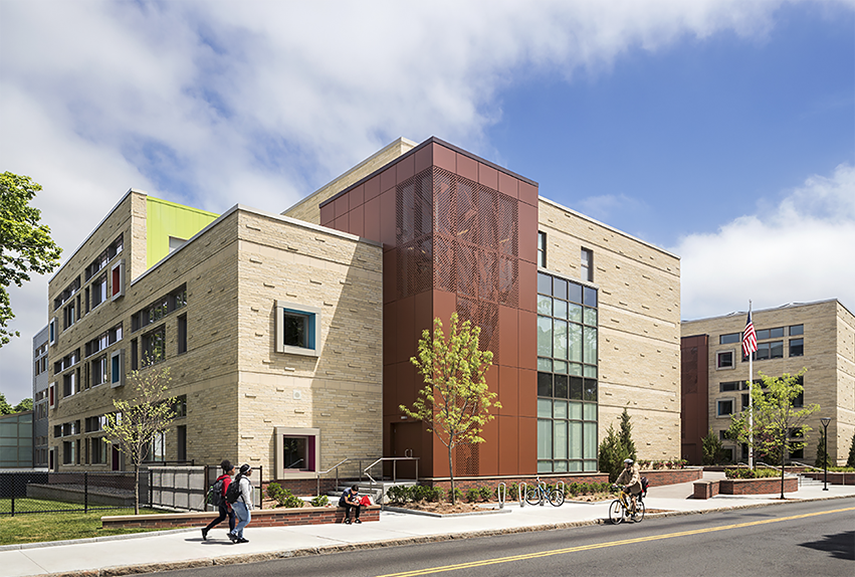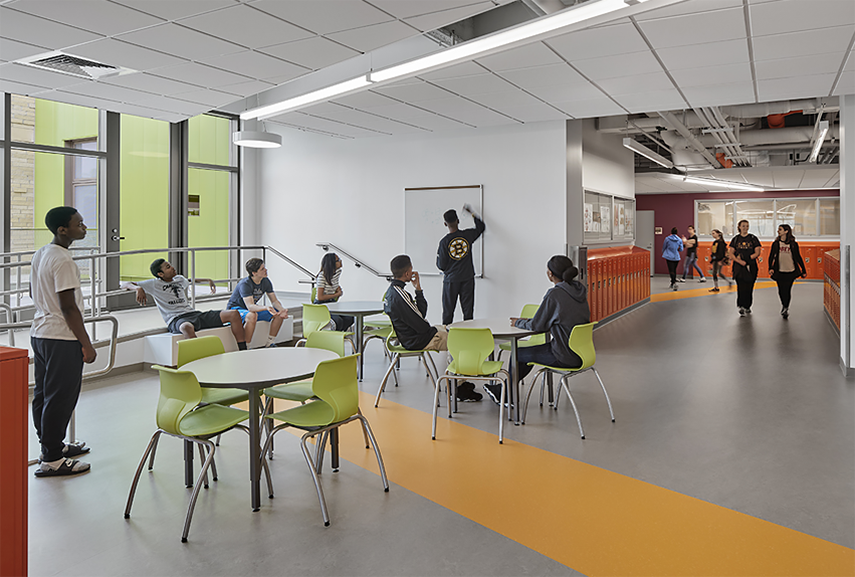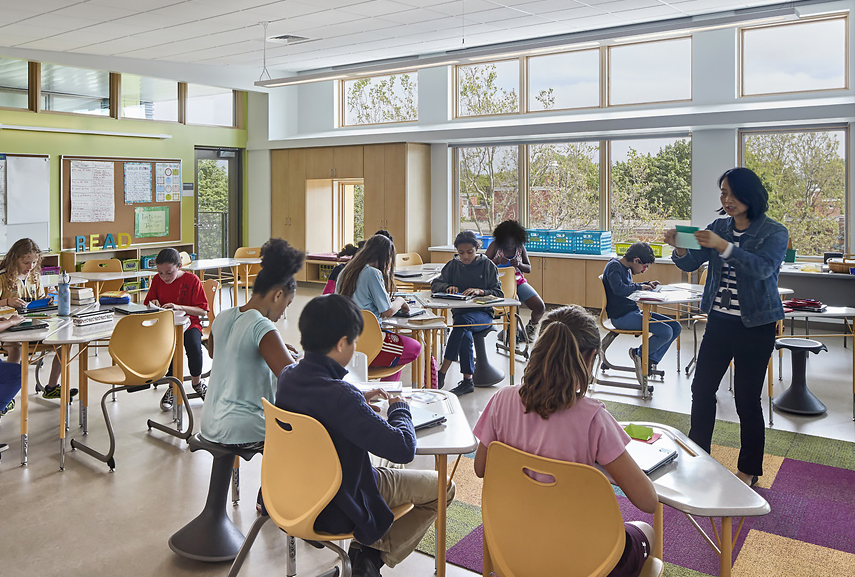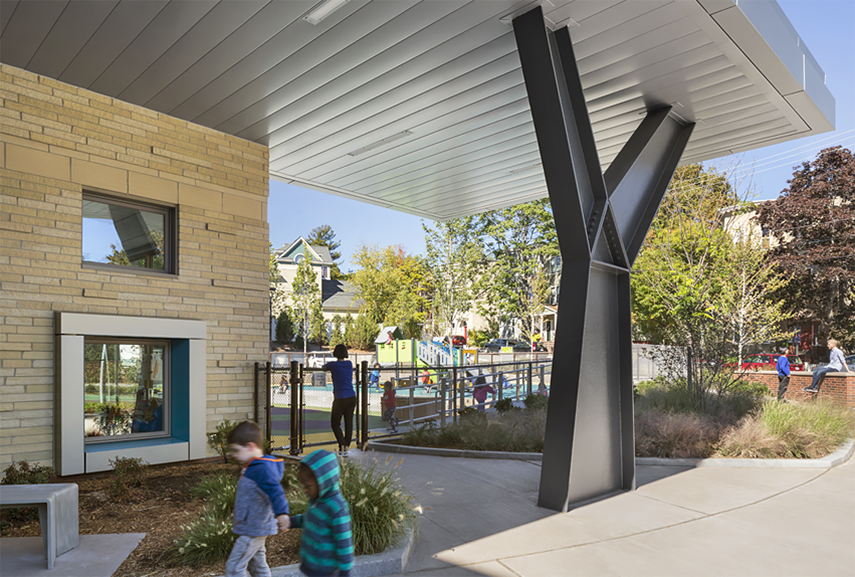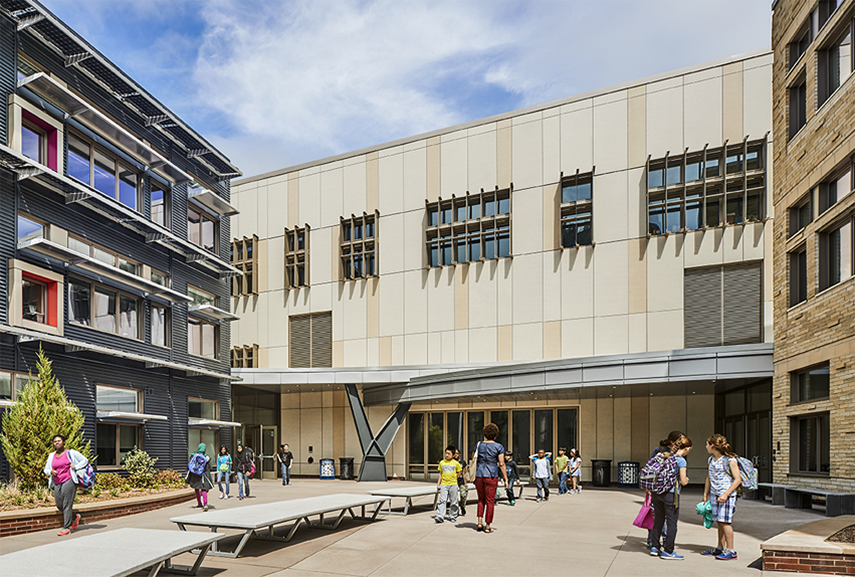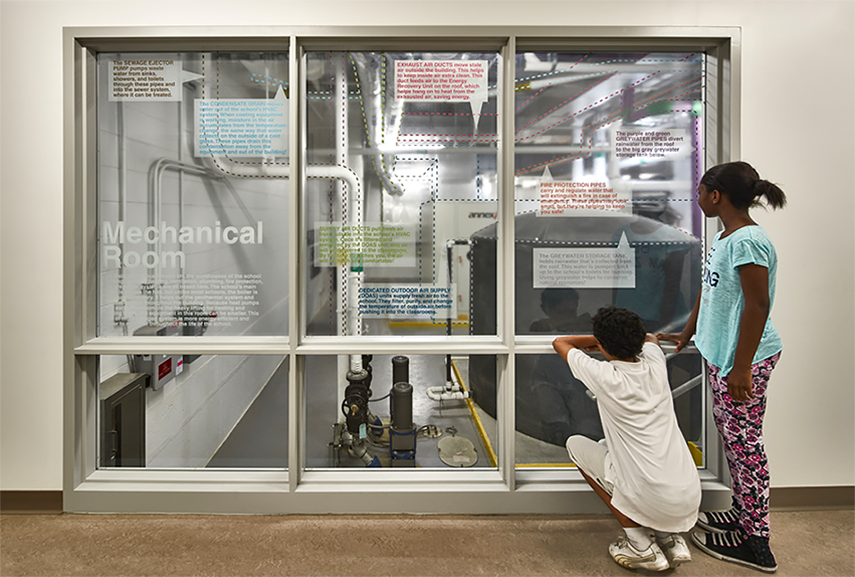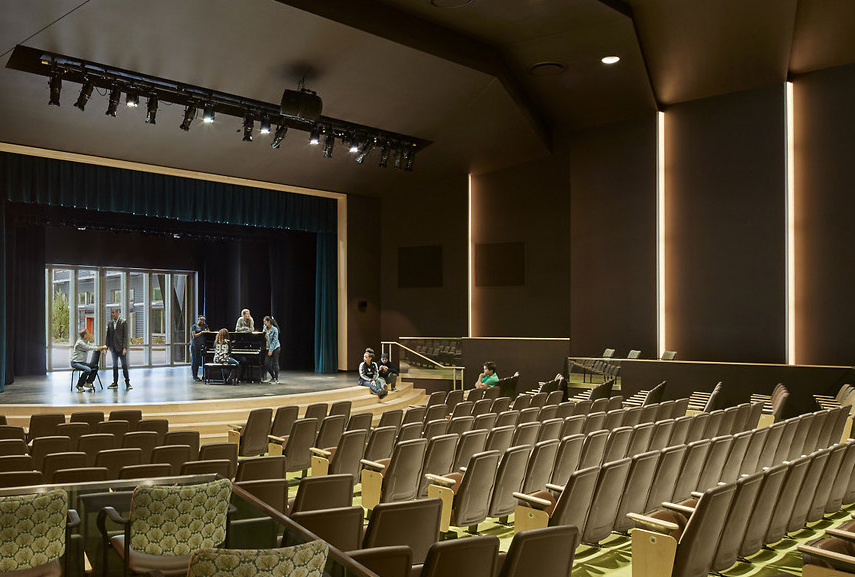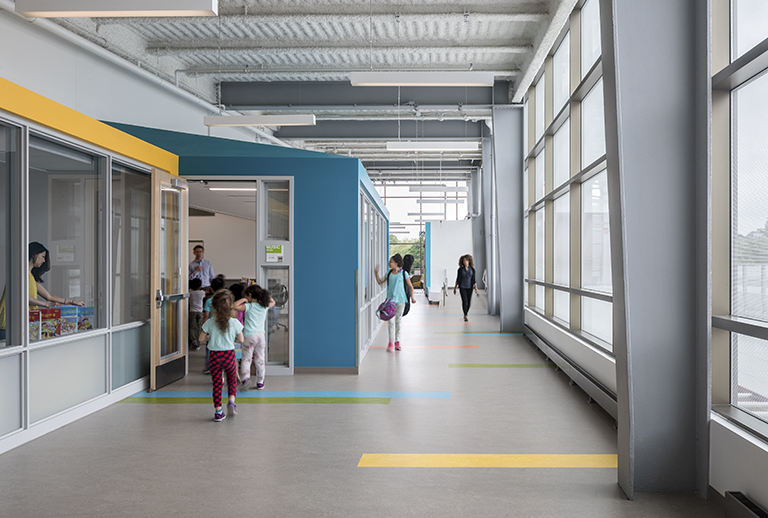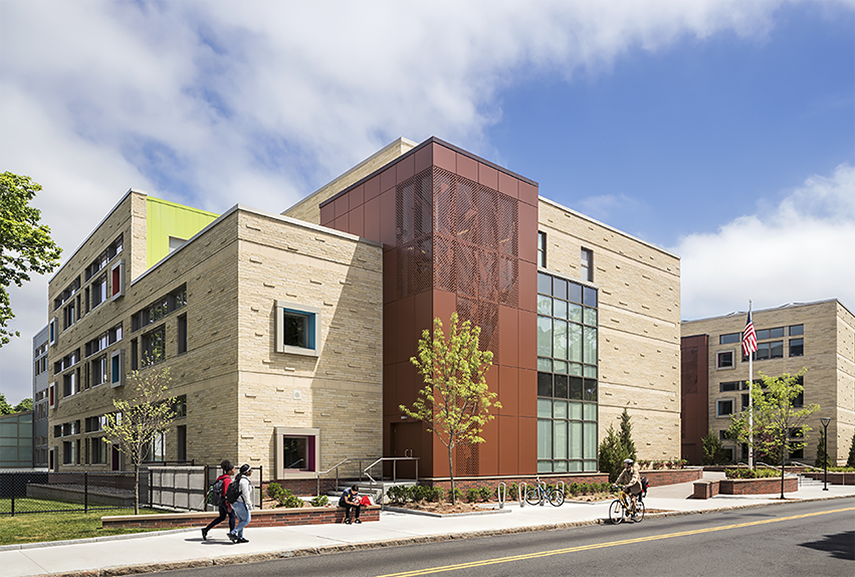
DR MARTIN LUTHER KING, JR. SCHOOL
The Dr. Martin Luther King, Jr. School houses three schools on one campus: the Dr. Martin Luther King, Jr. Preschool, Dr. Martin Luther King, Jr. School, and the Putnam Avenue Upper School (PAUS). The project was complicated by its small and irregular site; the large and complex program accommodating 840 children from preschool to 8th grade; robust after school programs; and an array of engaged stakeholders.
The design goal for the school was to synthesize the Cambridge Public Schools Superintendent’s “Innovation Agenda,” targeting significantly enhanced educational outcomes within this urban district, with the Mayor’s desire to pursue Net Zero Energy (NZE). At first, many stakeholders involved were concerned that the two agendas would result in conflict over financial resources, which could diminish the District’s educational and community goals. Instead, the process and design demonstrated a powerful synergy between the Innovation Agenda, sense of community within the school, and the pursuit of NZE. Together, these goals inspired a sustainable, high-performance urban learning environment for its students and the community.
Project Type
Education (Pre-K – 8th grades)
Dr. Martin Luther King, Jr. Preschool
Dr. Martin Luther King, Jr. School (K-5)
Putnam Avenue Upper School (6-8)
Location
Cambridge, Massachusetts
Size
170,000 SF
Case Brief By
Perkins Eastman Architects
Design Challenge: Dr. Martin Luther King, Jr. School, a Brutalist building fraught with challenges, was selected as the prototype school, and the design team was tasked to create both a high-performing building and a community school that interacted with and responded to its neighbors.
Design Solution
- Optimized building orientation by elongating the classroom bars along the East-West access to maximize daylight and to control heat and glare
- Limited glazing ratio to 31.7 percent and combined interior light shelves with exterior shades to provide well-lit, daylight autonomous classrooms with appropriate glare control
- Careful material selection along with CO2 meters and operable windows to provide an improved indoor air quality for the sensitive population
- Stacked the program vertically on the tight site to provide both indoor and outdoor educational opportunities for both students and the community
Impact of Design
- The building’s energy use is currently 14 percent lower than modeled, exceeding the project goals significantly, at 27 kBTU/sf/yr, with a net EUI of 15.2 kBTU/sf/yr
- Interior light shelves bounce daylight deep into classrooms, providing a glare-free daylit experience for students and teachers, resulting in 93 percent of people satisfied with the amount of daylight
- A 12-25 percent reduction in CO2 levels through the use of high-performance systems strongly correlates with a 57 percent increase in occupant satisfaction with air quality
- 100 percent agree the design of the school creates a pleasant place to work and learn, while 79 percent think the school building fosters community between faculty and students
Project
- Significant improvements were seen in both perceived and measured indoor environmental quality categories of daylight, acoustics, thermal comfort, and air quality.
- The building’s energy use is currently performing 14 percent lower than modeled.
- This school has become a successful catalyst in the school district for pursuing Net Zero Energy.
Process
Timeline
- Design: 2012-2013
- Construction: 2013-2015
- Post-Occupancy: 2016-Present
Project Team
- Architect of Record: Perkins Eastman
- Landscape Architect: Brown Sardina, Inc.
- Project Management Consultant: Michael Black
- Construction Manager: WT Rich
- General Contractor: Rich-Caulfield MLK Venture
- Structural Engineer: Foley Buhl Roberts and Associates
- MEP Engineer: AKF Group
- Civil Engineer: Nitsch Engineering
- Lighting Consultant: LAM Partners, Inc.
- Sustainability Consultant: Soden Sustainability Consulting
- Net Zero: In Posse
- Security and Technology: Garcia, Galuska, DeSousa Inc.
- Furniture Furnishing & Equipment: Point Line Space
- Foodservice:- Crabtree McGrath
- Hazardous Materials: Fuss & O’Neill EnviroScience, LLC
- Cost Estimating: VJ Associates
- Code: RW Sullivan
- AV and Acoustics: Acentech
- Specifications: Architx, LLC
